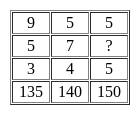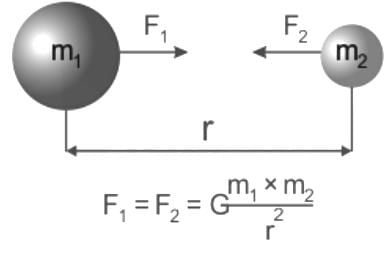NVS PGT Physics Mock Test - 3 - NVS TGT/PGT MCQ
30 Questions MCQ Test NVS PGT Mock Test Series 2026 - NVS PGT Physics Mock Test - 3
Who is known as the founder of Modern Carnatic music?
How many main organs are there in United Nations Organization?
Study the given pattern carefully and select the number that can replace the question mark (?) in it.

In the following question, assuming the given statements to be true, find which of the conclusion among given conclusions is/are definitely true and then give your answer accordingly.
Statement: P < Q < R < S = T
Conclusion:
I. Q < T
II. P > S
III. R = T
Which of the following is an ICT enabled teaching aid?
Cooperative learning is one of the best researched of all teaching strategies. Cooperative learning is a way that:
a. Addresses the needs of gifted students
b. Gives complete independence to students, while the teachers are free
c. Helps students in acquiring interpersonal skills
d. Develops the ability to work collaboratively in students
Choose from the options given below:
The gravitational force between two objects each of mass m, separated by a distance r, is F. Gravitational force between two objects each of mass 2m separated by a distance 2r, will be
Two long conductors, separated by a distance d carry current I1 and I2 in the same direction. They exert a force F on each other. Now the current in one of them is increased to two times and its direction is reversed. The distance is also increased to 3d. The new value of the force between them is
A particle located at x = 0 at time t = 0, starts moving along the positive x-direction with a velocity v that varies as . The displacement of the particle varies with time as:
[AIEEE 2006]
Newton's law of gravitation is called universal law because:
The force required to take away a flat plate of radius 4 cm from the surface of water is (surface tension of water = 70 dyne/cm)
A planet of mass M is revolving around sun in an elliptical orbit. If dA is the area swept in a time dt, angular momentum can be expressed as
The angle of incidence at which the reflected beam is fully polarized is called
A toroid wound with 60.0 turns/m of wire carries a current of 5.00 A. The torus is iron, which has a magnetic permeability of μm=5000μ0 under the given conditions. H and B inside the iron are
The electrostatic field due to a point charge depends on the distance r as 1/r2 . Indicate which of the following quantities shows same dependence on r.
Children think that everything around them, including toys, are alive. This mental characteristic of children is called
Assertion (A): A teacher records the pace of development of the students in his class, and finds that the pace of development is not equal for all the students.
Reason (R): Development varies from person to person because it follows the principle of individual differences.
If force (F) is given by F = Pt_1 + Qt, where t is time. The unit of P is same as that of
In the following question, an idiomatic expression and its four possible meanings are given. Find out the correct meaning of the idiom.
Q. A house divided against itself cannot stand.
The following questions consist of a single sentence with one blank only. You are given four words as answer choice and from the four choices, you have to pick up one correct answer, which will make the sentence meaningfully complete.
Q. Some ancient tribes still believe in evil spirits and the vagueness and _________ of after-life.
In the following question, out of the four alternatives, select the alternative which is the best substitute for the phrase.
Taking someone by surprise as though by magic.
The following sentence has been broken into four parts with an error in one part. Identify that part and mark it as your answer. If there are no errors in any of the given parts, mark option 4 or ‘No error’ as your answer.
Q. Rohan has neither spoken (1)/ nor (2)/ written to him. (3)/ No error (4).
|
30 tests
|
























